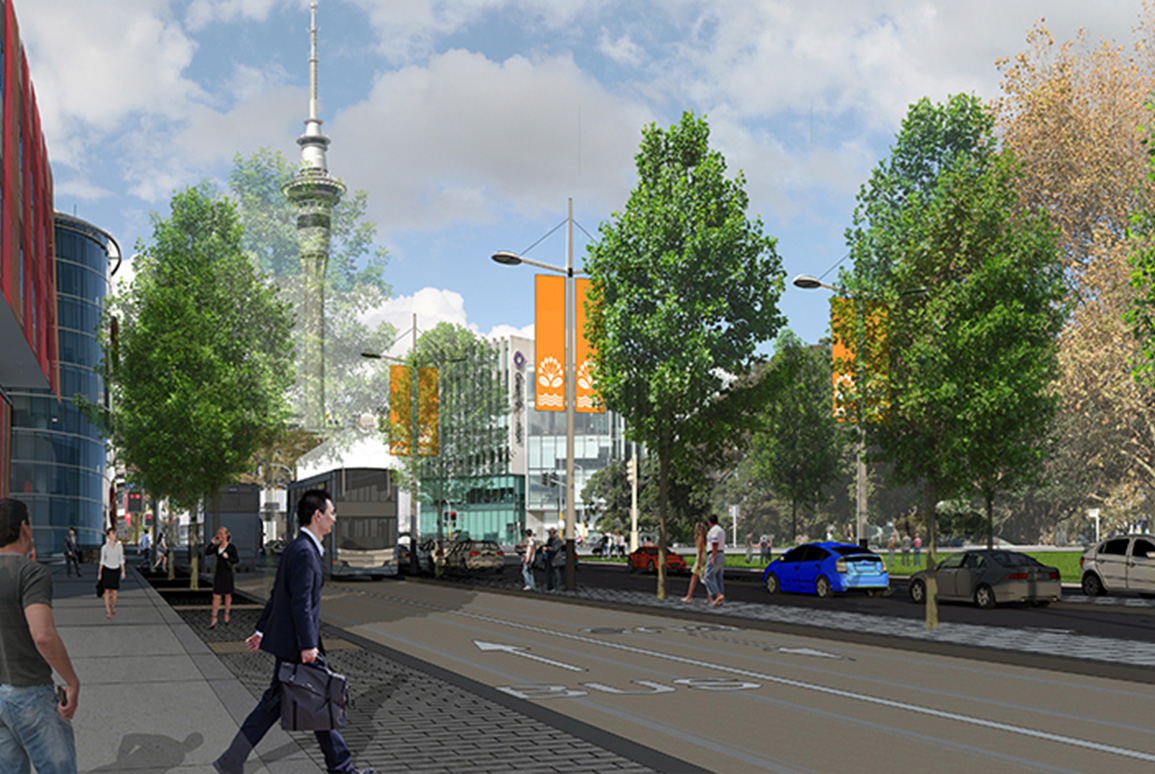Bold directions for inner city transport
7 July 2014
How are bold decisions made for future transport needs in already congested city centre streets? – By recognising the need for decisive action, creative thinking, stakeholder involvement and rigorous analysis.

This was the approach taken in the City Centre East West Transport Study (CEWTS) that was developed in 2013 for Auckland Transport by Aurecon transportation planners and engineers, and Boffa Miskell urban designers.
The study was commissioned to resolve complex competing demands for space in all the major east-west streets in Auckland’s city centre, taking account of Auckland Transport’s radical restructure of the bus network and key projects from Auckland Council's city centre master plan.
Boffa Miskell urban designer, Stuart Houghton, says analysis soon showed the streets in question are currently very similar in function, spatial cross-section and appearance, and designed to maximise vehicular capacity and traffic flow. Instead of trying to accommodate competing transport modes within these streets, the hard decision was made to reallocate space and funding to what the project team described as an ‘integrated multi-modal network’.
“Given the reality of limited space we quickly realised that more specialisation in transport function would be required in these big streets. Some would need to be major public transport routes, others would become walking and cycling spines associated with signature public spaces, and others would remain vehicular through-routes.”
A particular challenge that Stuart foresees in implementing the recommendations will be how to design the streets that combine bus services and pedestrian movement, given that the two are often perceived as incompatible. Future designs will need to bring about a shift in people's perception through high-quality workable upgrades.
Urban design in transport planning
Stuart says it was valuable for Boffa Miskell’s urban designers to work closely with Aurecon’s transport engineers and planners at all scales, from the 'big picture' strategy and network thinking, to land use planning and the detail of what makes streets successful.
“Bringing together the different specialist knowledge and concerns helped to fully understand the key success factors in providing for different transport choices including pedestrian, cycle, transit, car and goods movement.”
Auckland Transport’s Principal Transport Planner, Sam Corbett, says Boffa Miskell’s thorough analysis, using GIS and empirical techniques, provided a clear foundation for the urban design recommendations.
“Also, helpful were the spatial planning and visualisations that have been extremely effective in communicating how the recommendations will translate on the ground.”

